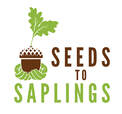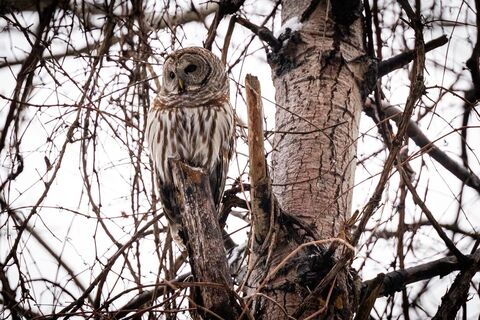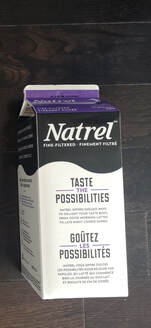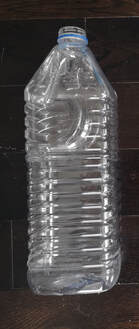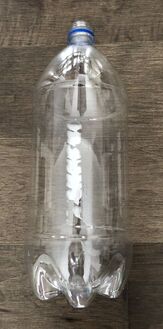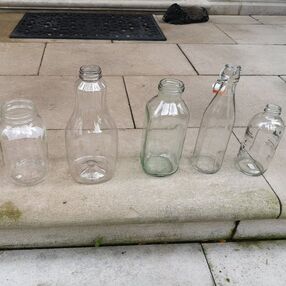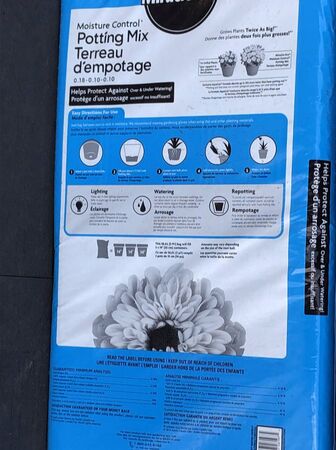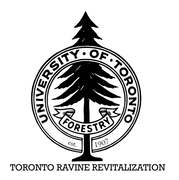|
This section will help you prepare for the Grow a Native Tree student project. Collect the required materials and refer to the Project Background to tie the activity to a broader context and bring it to life for your students. By participating, students will understand how important native trees are to ecosystems and feel empowered to continue taking action to improve humans' relationship with the natural world.
|
Teachers, if you are having a hard time finding oak acorns or sugar maple keys with your students, there are other Ontario native trees you can grow easily. Click here to learn more about alternative trees (pictures and links growing resources included). Click here for an alternative student project focused on these trees.
INtro Powerpoint
Use this PowerPoint presentation to introduce the Grow a Native Tree project to your class. Fully editable for any customizations you want to make.
Curriculum links
This project has direct ties to the Ontario grade 6 and 7 science curricula and more indirect ties to other grade levels. Since this project will not take too much time out of your year, you can choose to do it even if there are not any direct curricula links to your class. The project is very fun for younger students! This project could also be undertaken as an AP Biology independent project. If there is no in-class time, the project can be done by environmental clubs or at home.
Click on your grade level below to see the relevant concepts, big ideas, expectations and specific curriculum objectives within each unit that are related to the Seeds to Saplings student project. For teachers looking for further support, Forests Ontario offers virtual class lessons on a variety of trees-related topics for a range of ages.
Click on your grade level below to see the relevant concepts, big ideas, expectations and specific curriculum objectives within each unit that are related to the Seeds to Saplings student project. For teachers looking for further support, Forests Ontario offers virtual class lessons on a variety of trees-related topics for a range of ages.
Grade 6: Biodiversity
Fundamental Concepts
1.1, 1.2, 2.4, 3.2, 3.3, 3.4, 3.5, 3.7
- Systems and Interactions
- Sustainability and Stewardship
- Biodiversity includes diversity of individuals, species and ecosystems.
- Classification of the components within a diverse system is a beginning point for understanding the interrelationships among the components.
- Because all living things are connected, maintaining diversity is critical to the health of the planet.
- Humans make choices that can have an impact on biodiversity
- Assess human impacts on biodiversity and identify ways of preserving biodiversity
- Demonstrate an understanding of biodiversity, its contributions to the stability of natural systems, and its benefits to humans
1.1, 1.2, 2.4, 3.2, 3.3, 3.4, 3.5, 3.7
Grade 7: Understanding Life's Systems - Interactions in the Environment
Fundamental Concepts
2.3, 2.4, 3.1, 3.3, 3.8
- Systems and Interactions
- Sustainability and Stewardship
- Ecosystems are made up of biotic (living) and abiotic (non-living) elements, which depend on each other to survive.
- Ecosystems are in a constant state of change. The changes may be caused by nature or by human intervention.
- Human activities have the potential to alter the environment. Humans must be aware of these impacts and try to control them
- Assess the impacts of human activities and technologies on the environment, and evaluate ways of controlling these impacts;
- Investigate interactions within the environment, and identify factors that affect the balance between different components of an ecosystem;
- Demonstrate an understanding of interactions between and among biotic and abiotic elements in the environment
2.3, 2.4, 3.1, 3.3, 3.8
Grade 9: Biology: Sustainable Ecosystems
Big Ideas
B1.1, B1.2 B2.1, B2.2, B2.3, B2.5, B3.1, B3.2, B3.3, B3.4, B3.5
- Ecosystems are dynamic and have the ability to respond to change, within limits, while maintaining their ecological balance.
- People have the responsibility to regulate their impact on the sustainability of ecosystems in order to preserve them for future generations.
- B1. Assess the impact of human activities on the sustainability of terrestrial and/or aquatic ecosystems, and evaluate the effectiveness of courses of action intended to remedy or mitigate negative impacts;
- B2. Investigate factors related to human activity that affect terrestrial and aquatic ecosystems, and explain how they affect the sustainability of these ecosystems;
- B3. Demonstrate an understanding of the dynamic nature of ecosystems, particularly in terms of ecological balance and the impact of human activity on the sustainability of terrestrial and aquatic ecosystems
B1.1, B1.2 B2.1, B2.2, B2.3, B2.5, B3.1, B3.2, B3.3, B3.4, B3.5
There are also possible links with these Grade 9 Geography units:
- Interactions in the Physical Environment,
- Managing Canada’s Resources and Industries,
- Liveable Communities
Grade 10: Biology: Tissues, Organs and Systems of Living THings;
Earth and Space Science
Earth and Space Science
BIOLOGY
Big Ideas
B2.1, B2.2, B2.3, B2.4, B2.6, B3.1, B3.2, B3.3, D1.1
Big Ideas
- Plants and animals, including humans, are made of specialized cells, tissues, and organs that are organized into systems.
- B2. Investigate cell division, cell specialization, organs, and systems in animals and plants, using research and inquiry skills, including various laboratory techniques;
- B3. Demonstrate an understanding of the hierarchical organization of cells, from tissues, to organs, to systems in animals and plants.
B2.1, B2.2, B2.3, B2.4, B2.6, B3.1, B3.2, B3.3, D1.1
EARTH AND SPACE SCIENCE
Big Ideas
D1.1, D1.2, D2.3, D2.4, D3.3, D3.4, D3.5, D3.7, D3.8
Big Ideas
- Earth’s climate is dynamic and is the result of interacting systems and processes.
- Global climate change is influenced by both natural and human factors.
- Climate change affects living things and natural systems in a variety of ways.
- People have the responsibility to assess their impact on climate change and to identify effective courses of action to reduce this impact.
- D1. Analyse some of the effects of climate change around the world, and assess the effectiveness of initiatives that attempt to address the issue of climate change;
- D2. Investigate various natural and human factors that influence Earth’s climate and climate change;
- D3. Demonstrate an understanding of natural and human factors, including the greenhouse effect, that influence Earth’s climate and contribute to climate change
D1.1, D1.2, D2.3, D2.4, D3.3, D3.4, D3.5, D3.7, D3.8
Materials
|
Any common potting soil (compost-based organic potting soil is ideal but not necessary). The soil you pick should have good drainage, it's a good sign if your package mentions perlite, soil aeration, or moisture control.
Some bags could be purchased in advance and supplied at school for students, or students could be asked to bring in and share a bag between them. |
Tips for Care & Research Following Planting
- The lab/classroom will need enough space for the students to place their growing plants. The plants will also need to be situated near a window with access to light for several hours a day for growing. If space is limited in one classroom, perhaps neighbouring classrooms could be used. Alternatively, plants can be placed on a trolly with grow lights if natural sunlight is not available.
- Once the acorns are planted, students can attend to their growing plants themselves (e.g. watering seedlings, checking on growth, taking photos....). Minimal time each week is needed for this.
- Encourage your students to keep a simple log/photographic record of how each sapling is progressing throughout the growing time. Students can also fill out a Seed to Sapling Data Record to keep track of specifics like where they find their seed source and how long they stratify seeds for. This data can help Seeds to Saplings have a record of ultimate growing success and what possible adjustments we might need to make in the future. Please have the students submit a copy of their research logs to you before they leave school at the end of the year.
- At the end of the school year, students can take their growing saplings home and plant them using the instructions provided in step 3 of the project.
Possible follow-up questions for students
Depending on the age and grade level of your students, below are a list of possible questions that they could research and answer throughout the activity:
- After reading the background information supplied and the two recommended Globe and Mail articles on Norway maples by Peter Kuitenbrouwer and Eric Andrew-Gee, why do you think we are attempting to grow native trees? (the word “invasive” must be in your answer somewhere).
- Can you research three other invasive species other than the Norway maple that are currently impacting the Toronto ravine system? Include for each species: a. its name, b. a photograph of the species, c. at least two interesting characteristics of the species that allow it to thrive (and do possible damage) to our local ecosystems.
- Think of how small an acorn is compared to a massive oak tree. Since oak seedlings don’t run around catching prey for food, where does all the bulk or “mass” of a big oak tree come from exactly? (Hint: you may want to include an equation somewhere in your answer…)
- Write a simple paragraph on what you understand the term “climate emergency” to mean. In your answer, describe what you think most scientists feel would be the main cause of the climate emergency.
- The Liberal government recently set a goal for Canada over the next several years to plant two billion trees to help combat the climate emergency. How does planting a tree help offset the climate emergency exactly? (Hint: think back to that equation…)
- How is it possible that atoms, once part of your body, could become part of a tree?
- How could atoms, once part of a tree, become part of your body?
- Explain why trees have a better chance of growing in a well lit location.
- Gardeners are often warned not to overwater their plants. How is it possible then that a plant can survive and grow hydroponically with its roots constantly submerged in water?
- Why do you think the seeds of many tree species (like northern red oak) need a period of “stratification”, which we mimicked with their time in the refrigerator?
- If you were to redo this challenge what suggestions would you make to improve it?
